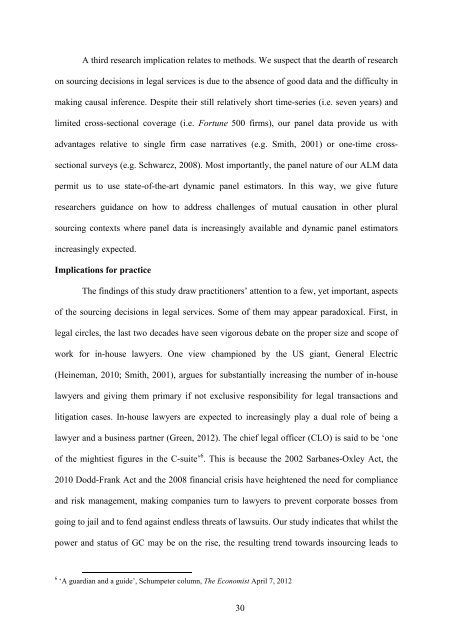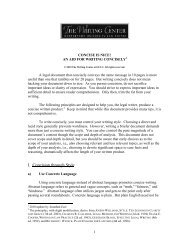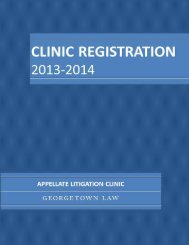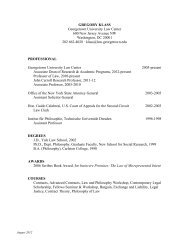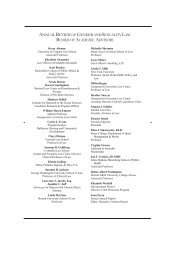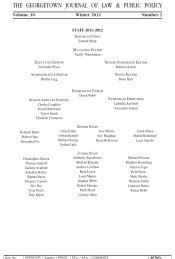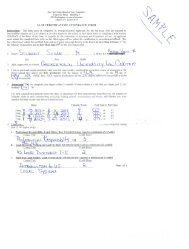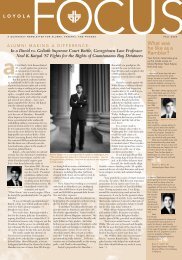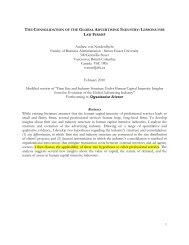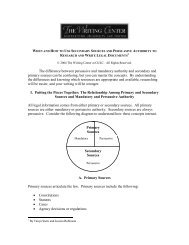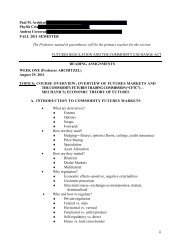Date: April 12, 2013 Topic: The Shrinking ... - Georgetown Law
Date: April 12, 2013 Topic: The Shrinking ... - Georgetown Law
Date: April 12, 2013 Topic: The Shrinking ... - Georgetown Law
Create successful ePaper yourself
Turn your PDF publications into a flip-book with our unique Google optimized e-Paper software.
A third research implication relates to methods. We suspect that the dearth of research<br />
on sourcing decisions in legal services is due to the absence of good data and the difficulty in<br />
making causal inference. Despite their still relatively short time-series (i.e. seven years) and<br />
limited cross-sectional coverage (i.e. Fortune 500 firms), our panel data provide us with<br />
advantages relative to single firm case narratives (e.g. Smith, 2001) or one-time crosssectional<br />
surveys (e.g. Schwarcz, 2008). Most importantly, the panel nature of our ALM data<br />
permit us to use state-of-the-art dynamic panel estimators. In this way, we give future<br />
researchers guidance on how to address challenges of mutual causation in other plural<br />
sourcing contexts where panel data is increasingly available and dynamic panel estimators<br />
increasingly expected.<br />
Implications for practice<br />
<strong>The</strong> findings of this study draw practitioners’ attention to a few, yet important, aspects<br />
of the sourcing decisions in legal services. Some of them may appear paradoxical. First, in<br />
legal circles, the last two decades have seen vigorous debate on the proper size and scope of<br />
work for in-house lawyers. One view championed by the US giant, General Electric<br />
(Heineman, 2010; Smith, 2001), argues for substantially increasing the number of in-house<br />
lawyers and giving them primary if not exclusive responsibility for legal transactions and<br />
litigation cases. In-house lawyers are expected to increasingly play a dual role of being a<br />
lawyer and a business partner (Green, 20<strong>12</strong>). <strong>The</strong> chief legal officer (CLO) is said to be ‘one<br />
of the mightiest figures in the C-suite’ 6 . This is because the 2002 Sarbanes-Oxley Act, the<br />
2010 Dodd-Frank Act and the 2008 financial crisis have heightened the need for compliance<br />
and risk management, making companies turn to lawyers to prevent corporate bosses from<br />
going to jail and to fend against endless threats of lawsuits. Our study indicates that whilst the<br />
power and status of GC may be on the rise, the resulting trend towards insourcing leads to<br />
6 ‘A guardian and a guide’, Schumpeter column, <strong>The</strong> Economist <strong>April</strong> 7, 20<strong>12</strong><br />
30


